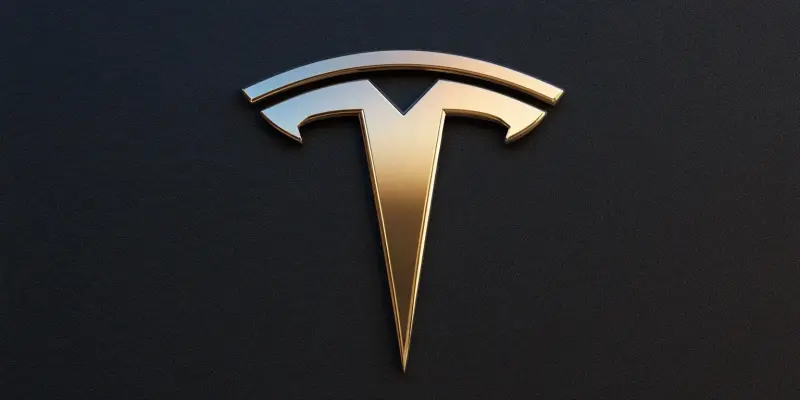In a significant stride toward revolutionizing autonomous technology, Tesla is leveraging its Dojo supercomputer to transform self-driving cars and robotics. This cutting-edge technology processes vast quantities of real-time data to enhance the intelligence and autonomy of Tesla vehicles and their newly introduced humanoid robot, Optimus. Each Tesla car, functioning almost like a roaming data collection unit, gathers crucial information on traffic patterns, pedestrian movement, and varying road conditions. The data is then swiftly processed by Dojo, making the company’s self-driving capabilities increasingly advanced and responsive.
Dojo’s immense processing power allows Tesla to rely on a vision-only approach, using only cameras and advanced software for navigation and decision-making, unlike competitors that use an array of sensors. This vision-based system mimics human sight, enabling Tesla cars to interpret and react to their environment more effectively. A pivotal component is the custom-designed D1 chip within Dojo, which is instrumental in managing extensive data processing and facilitating rapid decision-making. The result is enhanced safety and efficiency for autonomous vehicles, positioning Tesla a step ahead in the race toward effective and widespread self-driving solutions.
The Vision-Only Approach
Tesla’s distinctive vision-only approach utilizes just cameras, supported by advanced software, to navigate the complex environment of modern roadways. This contrasts significantly with other industry players who employ a combination of technologies, including LiDAR and radar, in addition to cameras. By relying solely on vision, Tesla’s approach closely mimics human sight and decision-making processes, leading to potentially more natural and intuitive vehicle responses. This strategy not only simplifies the vehicle’s hardware but also significantly cuts down costs associated with multiple sensor systems, making the technology more accessible over time.
Dojo’s processing prowess enables the effective functioning of this vision-only method. The custom D1 chip, a hallmark of Dojo, can manage and interpret the copious amounts of data collected through various high-definition cameras installed in every Tesla vehicle. This enables real-time processing and ensures rapid, decisive actions on the road. A continuous inflow of data from thousands of vehicles globally allows Dojo to refine its algorithms and improve the self-driving capabilities in unison. Each data point collected—from an unexpected roadblock to a sudden pedestrian crossing—serves to fine-tune the system, making it smarter and more reliable with each passing day.
Moreover, this vision-only strategy underscores Tesla’s confidence in its artificial intelligence and machine learning algorithms. The ability to interpret visual data as humans do, and make split-second decisions, is a colossal leap in autonomous technology. By forgoing additional sensors, Tesla also reduces potential points of failure, which can arise from the complexity of integrating multiple systems. Dojo, with its bespoke hardware and sophisticated software, seamlessly processes the incoming data to ensure the autonomous system is updated and improved continually, resulting in an ever-evolving, smarter fleet of Tesla vehicles.
Expanding Robotics Capabilities
Beyond its revolutionary influence on self-driving technology, the Dojo supercomputer significantly drives the development of Tesla’s humanoid robot, Optimus. Similar to its role in enhancing vehicle autonomy, Dojo processes an enormous stream of data to improve Optimus’s capacity to understand and interact with its environment. Each interaction with its surroundings allows Optimus to learn and adapt, eventually leading to higher efficiency and productivity in various tasks. The implications of this technology extend far beyond automotive applications, potentially influencing industries such as manufacturing, logistics, and beyond, where robotic assistance could transform operational dynamics.
Optimus uses Dojo’s massive data processing capabilities to develop a keen understanding of human behaviors and environments. This continual learning loop allows the robot to perform increasingly complex tasks over time, from basic manual labor to intricate interactive duties. The adaptability and growing intelligence of Optimus signify a major achievement in robotics, driven largely by the unparalleled computational power of Dojo. As Optimus learns and evolves, its utility in both industrial and domestic settings expands, offering transformative solutions for labor-intensive operations and enhancing everyday life convenience.
Meanwhile, developing and scaling a supercomputer of Dojo’s magnitude brings inherent challenges, including budget and operational complexities. The growing Tesla fleet continuously generates more data, demanding regular updates in computing power and storage solutions. Despite these obstacles, the potential rewards of fully autonomous vehicles and versatile robots are profoundly motivating. The vision of a self-learning, adapting system that integrates seamlessly into daily life reinforces Tesla’s commitment to pushing the boundaries of technological innovation. By processing massive amounts of data rapidly, Dojo is not simply a tool but the backbone driving forward Tesla’s ambition in both autonomous driving and advanced robotics.
Potential for Widespread Applications
Tesla is making significant progress in autonomous technology by utilizing its Dojo supercomputer to advance self-driving cars and robotics, notably the new humanoid robot, Optimus. The cutting-edge Dojo processes massive amounts of real-time data, enhancing the intelligence and autonomy of Tesla vehicles. Each Tesla car serves as a mobile data collection unit, gathering vital information on traffic patterns, pedestrian movements, and diverse road conditions. This data is processed by Dojo, helping improve Tesla’s self-driving capabilities. Unlike competitors, Tesla employs a vision-only approach, relying on just cameras and sophisticated software for navigation and decision-making. This method replicates human sight, allowing Tesla cars to better interpret and respond to their surroundings.

